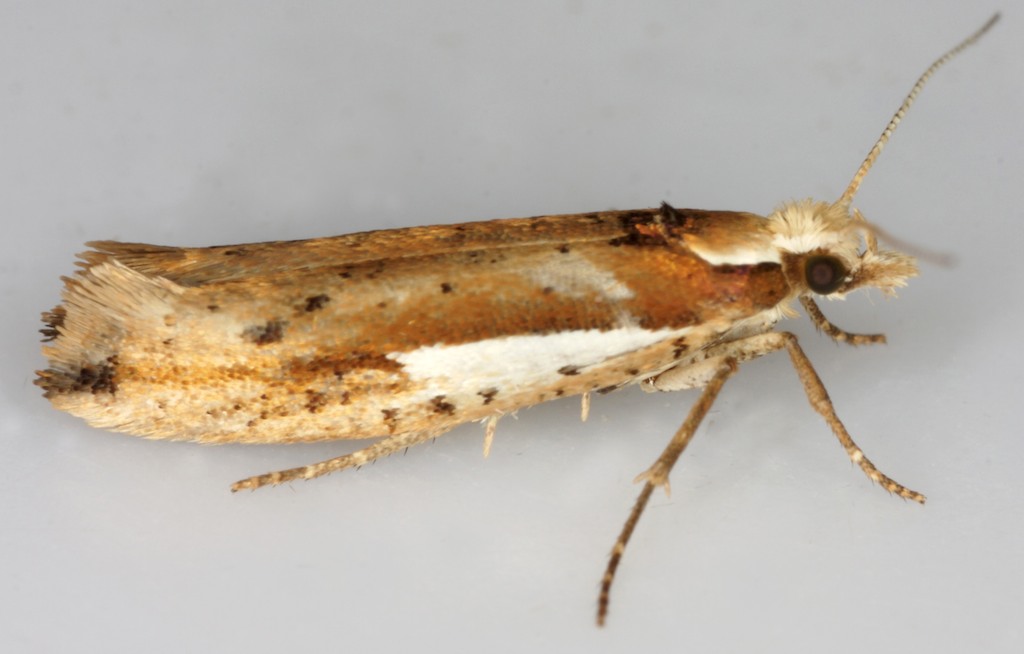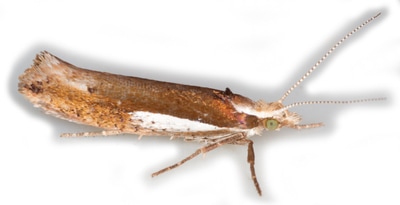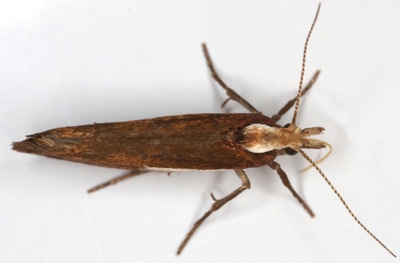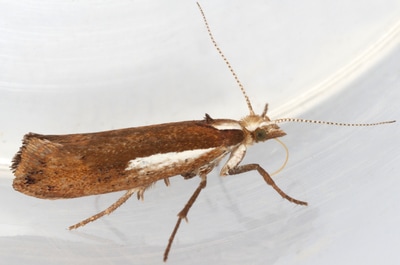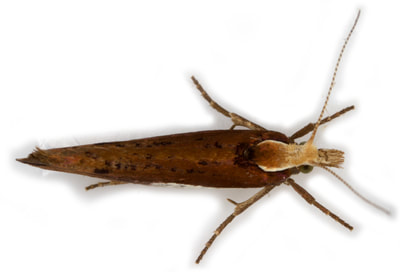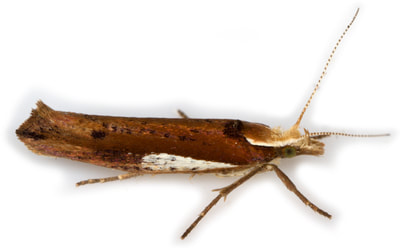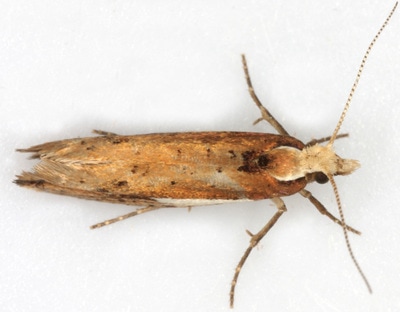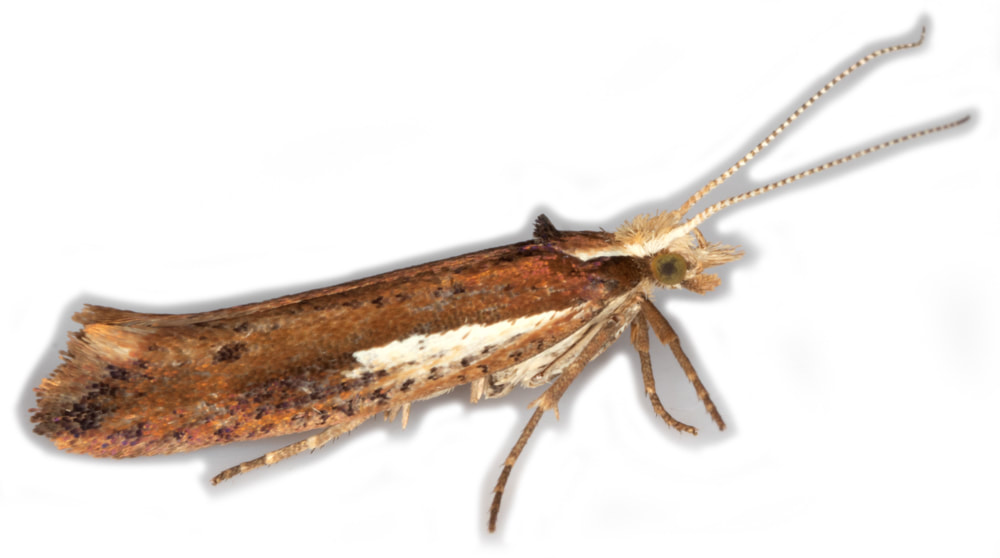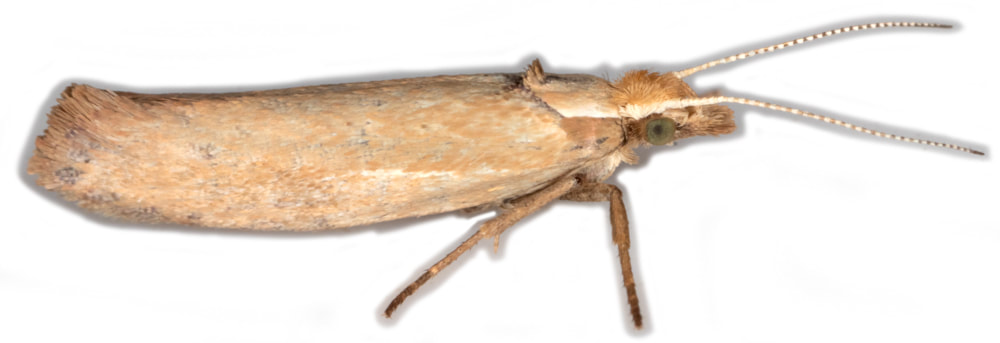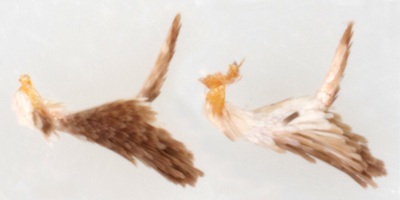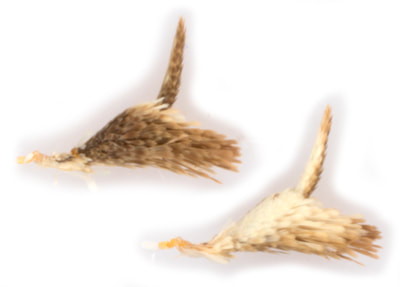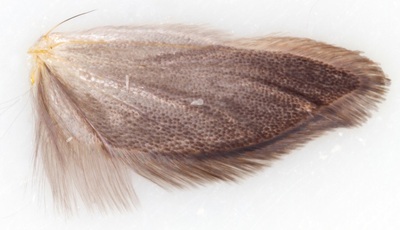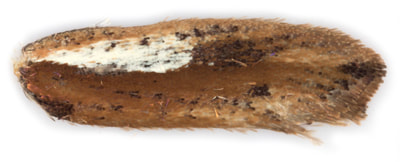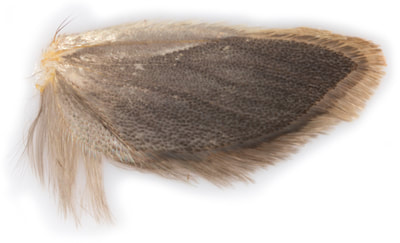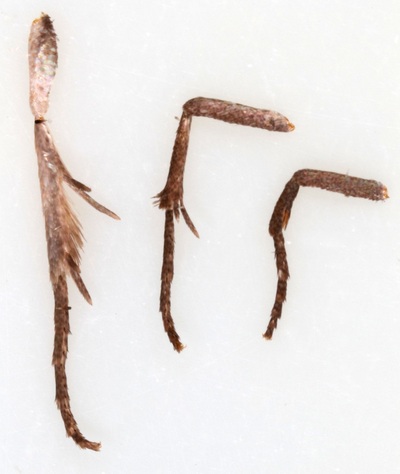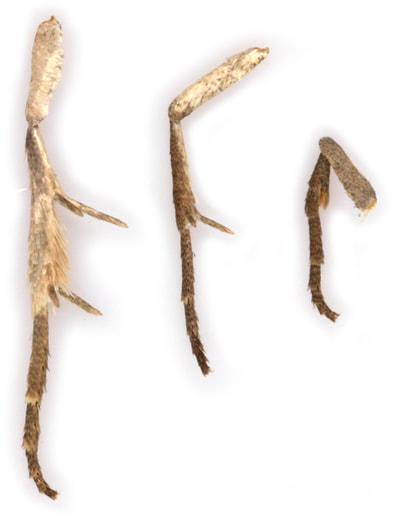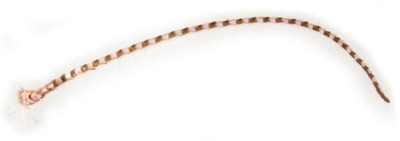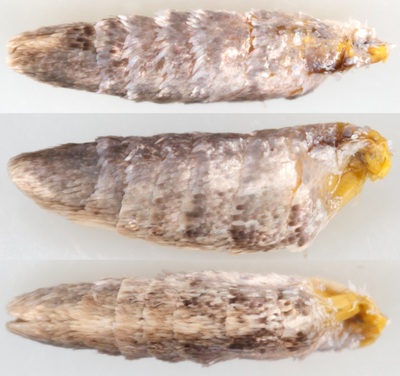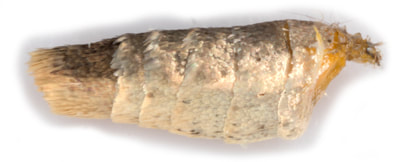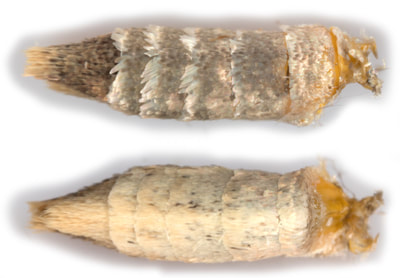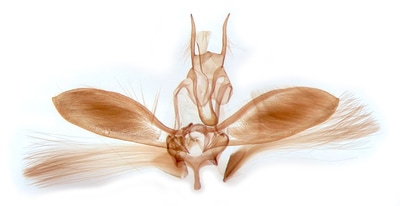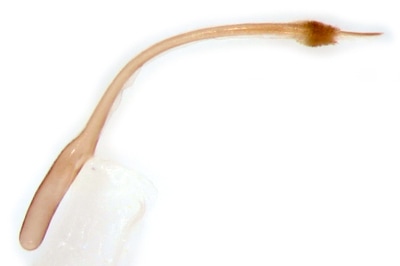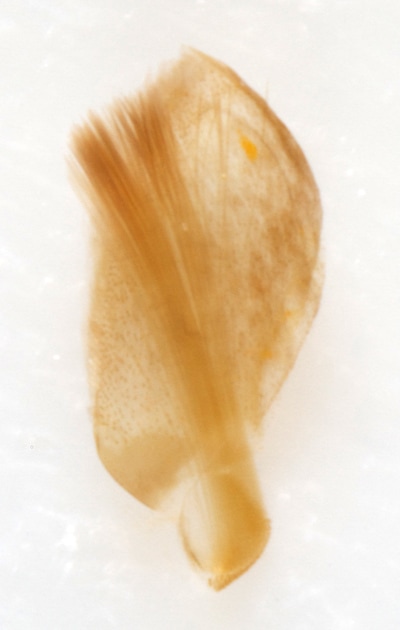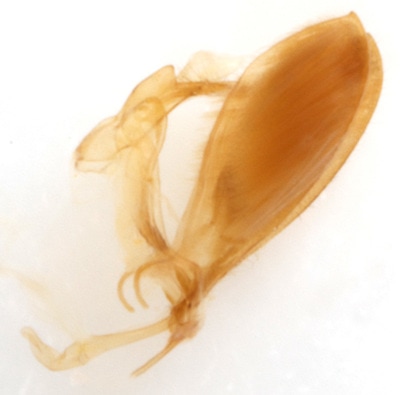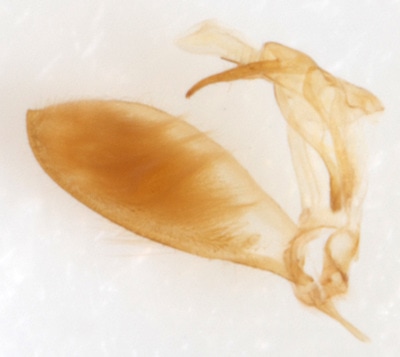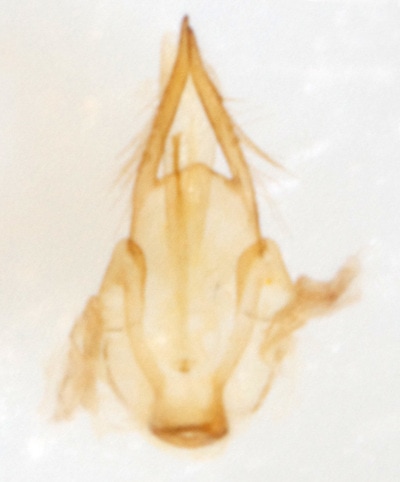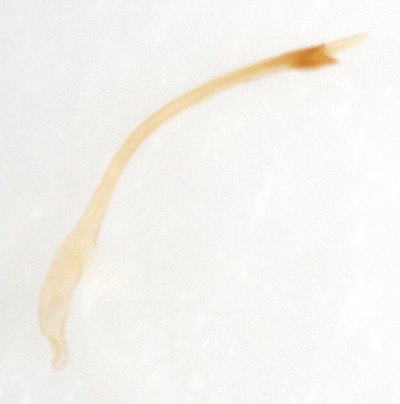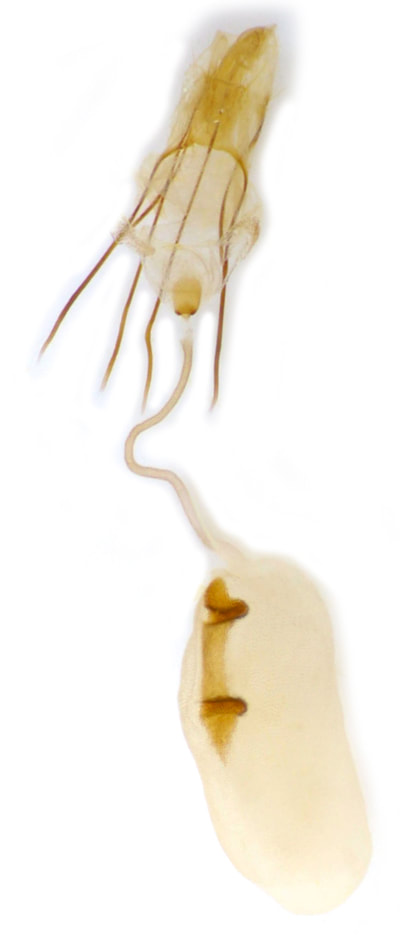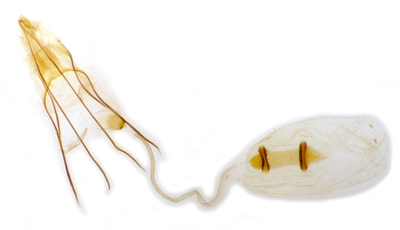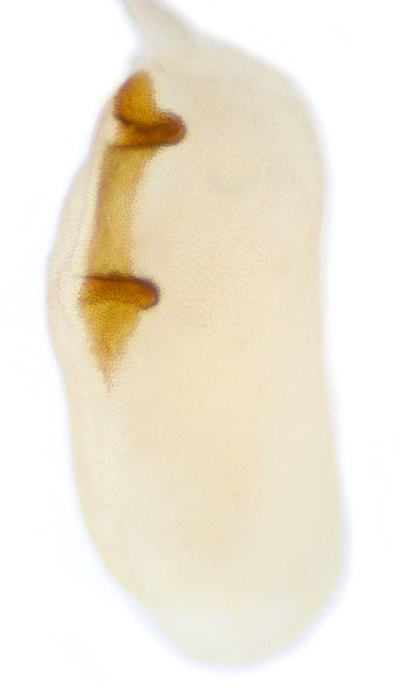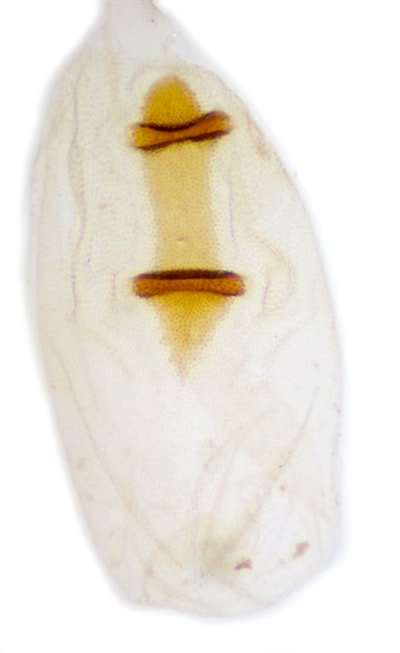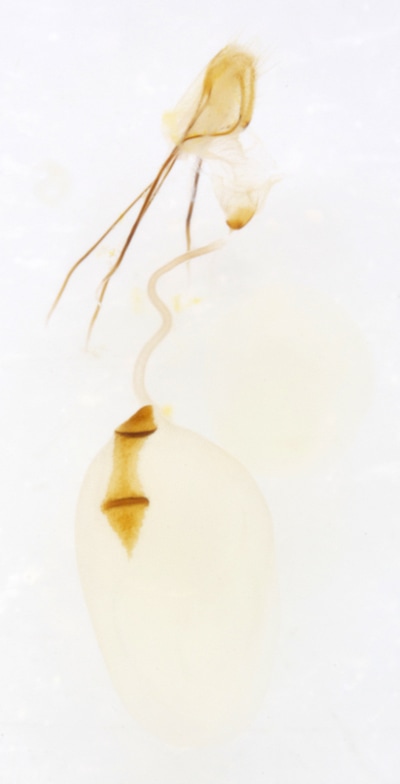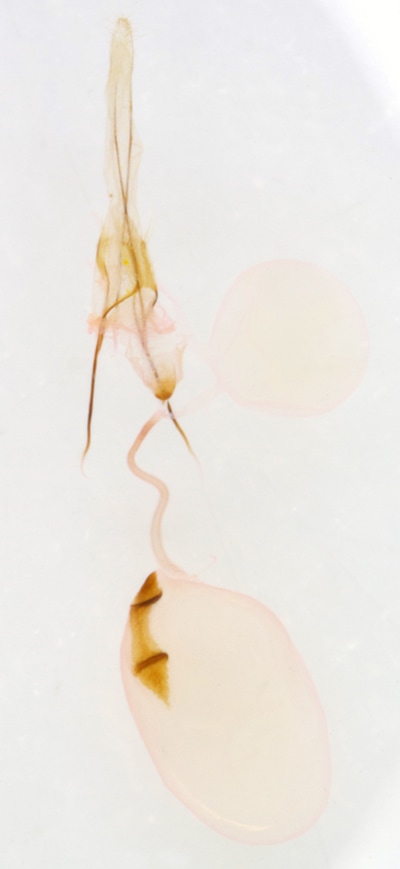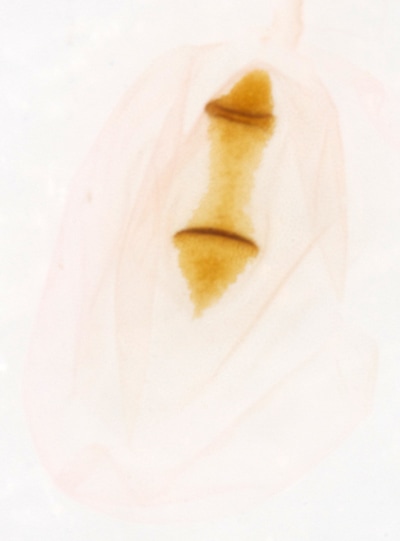17.010 Ypsolopha parenthesella (White-shouldered Ochre)
ws: 15-19mm; Aug-Sep; oak (Quercus spp), Hazel (Corylus avellana), hornbeam (Carpinus betulus), birch (Betula spp); common throughout GB
ID: Keyed in MBGBI3 as: termen not produced; thorax not white; forewing without black dorsal streak; whitish costal streak to at least ½.
However, the thorax does have white lateral stripes and the whitish streak is clearly not costal. So I think this is better: termen not produced; thorax not white centrally; forewing without black dorsal streak; subcostal white wedge from near wing base to at least ½ length of wing. This whitish wedge is not always present, in which case Y.sylvella and Y.alpella can be excluded by the absence of any trace of two oblique forewing fasciae, leaving Y.ustella. MBGBI3 states that Y.parenthesella and Y.ustella can be distinguished by the white or ochreous head of Y.parenthesella, but gives the head of Y.ustella as ochreous to fuscous. Individuals without a white wedge and with an ochreous head may be reliably distinguished by the white stripes on either side of the thorax of Y.parenthesella (hence "White-shouldered Smudge")
Male Genitalia: The valva of Y.parenthesella is produced at the apex as a broad-based point; Y.ustella has a narrow-based spine in this position. The aedeagus of Y.parenthesella is slender with a distinct curve at about 1/2; that of Y.ustella is more robust and has a curve nearer the base (at ~3/7); the cornuti of Y ustella also appear to be more robust.
Female Genitalia: By comparison of images of the two species at Moth Dissection: Y.parenthesella has a sinuate ductus bursae with little sclerotisation; Y.ustella has a well-sclerotised straight ductus bursae. There is probably also a difference in the shape of the signum between the two species but this is not well shown at dissection group and I await further material for Y.ustella to make this comparison.
However, the thorax does have white lateral stripes and the whitish streak is clearly not costal. So I think this is better: termen not produced; thorax not white centrally; forewing without black dorsal streak; subcostal white wedge from near wing base to at least ½ length of wing. This whitish wedge is not always present, in which case Y.sylvella and Y.alpella can be excluded by the absence of any trace of two oblique forewing fasciae, leaving Y.ustella. MBGBI3 states that Y.parenthesella and Y.ustella can be distinguished by the white or ochreous head of Y.parenthesella, but gives the head of Y.ustella as ochreous to fuscous. Individuals without a white wedge and with an ochreous head may be reliably distinguished by the white stripes on either side of the thorax of Y.parenthesella (hence "White-shouldered Smudge")
Male Genitalia: The valva of Y.parenthesella is produced at the apex as a broad-based point; Y.ustella has a narrow-based spine in this position. The aedeagus of Y.parenthesella is slender with a distinct curve at about 1/2; that of Y.ustella is more robust and has a curve nearer the base (at ~3/7); the cornuti of Y ustella also appear to be more robust.
Female Genitalia: By comparison of images of the two species at Moth Dissection: Y.parenthesella has a sinuate ductus bursae with little sclerotisation; Y.ustella has a well-sclerotised straight ductus bursae. There is probably also a difference in the shape of the signum between the two species but this is not well shown at dissection group and I await further material for Y.ustella to make this comparison.
§1 Strumpshaw Fen, Norfolk; 15/07/2008; fw 8.3mm
§2 Strumpshaw Fen, Norfolk; 08/09/2011; female
§3 Fersit, Argyll; 28/07/2013; male; fw 8.3mm
§4 Foulden Common, Norfolk; 14/08/2016; male
§5 Foulden Common, Norfolk; 29/06/2017; female; fw 8.9mm
§6 Cliburn Moss, Cumbria; 03/08/2019
§7 Loch Fyne, Argyll; 01/08/2022
All images © Chris Lewis
§2 Strumpshaw Fen, Norfolk; 08/09/2011; female
§3 Fersit, Argyll; 28/07/2013; male; fw 8.3mm
§4 Foulden Common, Norfolk; 14/08/2016; male
§5 Foulden Common, Norfolk; 29/06/2017; female; fw 8.9mm
§6 Cliburn Moss, Cumbria; 03/08/2019
§7 Loch Fyne, Argyll; 01/08/2022
All images © Chris Lewis
Page published 30/01/2012 (§1-2) | §3 added and text expanded 28/03/2014 | §4 added 19/04/2017 | §5 added 10/04/2018 |
§6 added 20/10/2019 | Text amended 05/12/2022 | §7 added 22/12/2022
§6 added 20/10/2019 | Text amended 05/12/2022 | §7 added 22/12/2022
